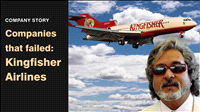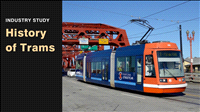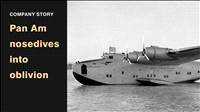History of hovercraft Part 2 | Industry study | Business History
By Kiron Kasbekar | 04 Dec 2023
The evolution of hovercraft: 1960 to 2021
In Part 1 of the hovercraft story, I spoke about the early attempts to make vehicles that could move on a cushion of air. Over water bodies and over land.
I also talked about how Christopher Cockerell invented the hovercraft but could not initially get the funding he needed to launch these craft in the market. And then how he got some funding from Britain’s National Research Development Corporation, to enable him to collaborate with aerospace company Saunders-Roe to build the first hovercraft, the SR.N1.
This hovercraft, which could carry four people and move at 28 miles per hour, was displayed before the public on 11th June 1959.
In this episode of our history of hovercraft, we shall examine developments during the 1960s and afterwards.
The 1960s were an important period in the evolution of hovercraft technology. Hovercraft technology was refined during the 1960s, and then commercialization began. The concept of hovering over water or land on a cushion of air gathered more support, and hovercraft began being used for diverse purposes.
The British aerospace and marine engineering firm, Saunders-Roe, also known as Saro, played an important role in the history of hovercraft.
In 1959 Saunders-Roe demonstrated the SR.N1, the first practical hovercraft it built under contract to the National Research Development Corporation. The craft was based on Cockerell’s design.
Saunders-Roe, which made aircraft and helicopters before it began making hovercraft, then made the hovercraft known as SR.N4, which were used as ferries to carry passengers and cars across the English-Channel between southern England and France.
That same year the company’s helicopter and hovercraft businesses were acquired by Westland Aircraft. In 1964 Westland’s hovercraft operations were merged with Vickers-Armstrongs to form the British Hovercraft Corporation. And, wonder of wonders, in 1985 this company was acquired by Westland and renamed as Westland Aerospace. After that, hovercraft production dwindled to near-zero until the development of the AP1-88.
Then hovercraft that could ferry cars were introduced, and that ushered in the first large-scale commercial use of hovercraft. These mammoth vehicles showcased the technology’s ability to traverse both water and land, reducing travel time between Britain and France. However, operational challenges, including maintenance, and weather sensitivity, held back their success.
The SR.N4 was built to accommodate 254 passengers in two compartments, plus a four-lane garage capable of holding up to 30 cars. These vehicles could embark and disembark via a frontal ramp. The first of these hovercraft were 40 meters long and weighed 193 tonnes. They had a top speed of 83 knots (i.e., 154 kilometers per hour) and could sustain a cruising speed of over 60 knots (about 111 kilometers per hour).
As demand grew, an extended series of the SR.N4 was created. The Mk.III variant could accommodate nearly double the number of vehicles and passengers compared to its Mk.I predecessor.
These hovercraft provided routine transportation services across the English Channel from 1968 to 2000. The company also expected military orders. But these did not materialize.
And then came the big blow to the hovercraft service on the English Channel.
The opening of the Channel Tunnel between Britain and France on 6 May 1994 sounded the death toll of the cross-Channel hovercraft. After the fleet’s engagement in cross-channel transit ceased on 1st October 2000, a solitary survivor of the Mk.III, named the GH-2007 Princess Anne, now stands as an immobile exhibit inside the Hovercraft Museum at Lee-on-Solent.
In the meanwhile, during the 1970s, hovercraft technology had found applications in the military sector, and in other civilian sectors besides the type represented by the Channel ferries.
Military strategists recognized the hovercraft’s versatility, and realized how they could be used for amphibious assault capabilities and for transport over difficult but flat terrains.
The British were the first to make military use of hovercraft when they deployed these craft in South-East Asia. In August 1964, the Royal Navy stationed two armed hovercraft in Singapore. Later that year, these hovercraft were sent to Tawau in Malaysian Borneo, where they were used to navigate waterways during the Indonesia-Malaysia confrontation and the war against leftist rebel forces.
During the 1960s, Bell Aircraft, an American company, acquired a license to manufacture and market the Saunders-Roe SR.N5 as the Bell SK-5. These craft were put to the test during the Vietnam War by the United States Navy, where they served as patrol vessels in the Mekong Delta. Modifications were made to create a flat deck, a gun turret, and a grenade launcher.
Three hovercraft with a flat-deck configuration were deployed at Dong Tam and Ben Luc in the Mekong Delta region in 1966, and saw action in the Plain of Reeds. After two of these craft were destroyed in 1970, the unit was disbanded.
In 2003, during the war launched by the US and its allies against Iraq, the British planned to land armored reconnaissance vehicles carried on hovercraft on Iraq’s shores. The plan was abandoned after the British got to know that the beaches had been extensively mined.
So there was this experience in Iraq, and then, given the nature of war today, where there is less dependence on troop incursions into enemy territory and greater reliance on aircraft and unmanned drones, we may not see a great deal of use of hovercraft use by armed forces.
Well, on that note, I have come to the end of part 2 of the video series on hovercraft.




























